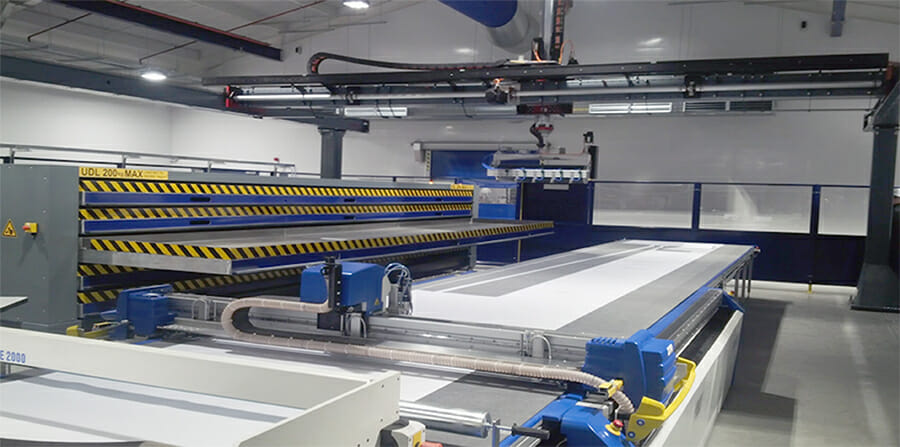Robotics is very much at the forefront of discussions about automation and employment. Overwhelmingly the focus is on Collaborative robots, and how they will establish themselves more widely within a manufacturing environment.
Behind the scenes however, the Gantry robot not only remains an essential and valued part of many traditional automation solutions, but is in fact finding its way into new and more demanding areas, where its attributes of potentially very large work envelopes, accessibility and efficient use of floor-space bring significant benefits.
For applications where high levels of dexterity and high speeds are required within a limited work envelope, there is no doubt that 6-axis robots normally offer the optimum solution, and gantry robots simply do not compete either in terms of speed and cost.
However, once the required work envelope begins to increase beyond that attainable by a standard floor mounted 6-axis robot, then the concept of the Gantry robot comes into its own. The simple linear motion concept of the Gantry robot means that it is easily configurable in length width and height to suit the specific application.
Furthermore, as the required working volumes grow, the Gantry robot becomes not just the optimum solution, but in many cases it is actually the only feasible way of covering the working area efficiently and cost effectively.
(Güdel’s Gantry Robots Are Able To Span Large Areas)
Another significant factor is that with a 6-axis robot, the shape of the working envelope means that the complete working area and associated floor-space has to be guarded. By comparison, a gantry robot can be configured to operate safely above areas where operator access is required, without interrupting the operation of the system. For example, in applications where a single gantry robot spans several separate working areas or machines, it is possible to provide access underneath parts of the gantry using a walkway with overhead guards. In other applications, such as machine tending, the gantry robot can sit above several machines, with minimal footprint, servicing each in turn, but without restricting access to the front of the machines for tool changing etc. if required.
Reaching Out To Emerging Applications
This ability to cover extensive areas, where 30 to 40 metres of travel in the X and Y directions is not unusual, also means that gantry robots are finding their way into new applications in a variety of high-tech industry segments, such as renewables and aerospace. A Güdel gantry robot is already at work helping to produce composite components for tidal turbine blades. In this instance, the overhead gantry robot dynamically picks complex carbon-fibre shapes from an XY cutting system. A sophisticated end-effector, developed specifically for the application and mounted directly to the Güdel gantry, collects, transfers and deposits parts of differing geometry up to 7.0M in length within a fully automated storage system. The end effector is capable of rolling up and then unrolling these long pieces for storage, and also flat-picking the smaller pieces.
(Gudel’s gantry is at the heart of a Tidal Turbine Blade development cell.)
Composites are finding their way into a wider range of larger applications, and as they are used for more and more parts, which were traditionally manufactured from metals, then the role of the gantry robot is set to diversify even further. Güdel gantry robots are rightly renowned for their robust construction and their ability to handle large payloads with the highest levels of repeatability and accuracy – features that are essential for success in new, high-technology applications.
In another very different industry, a potential revolution in the way in which simple timber frames are manufactured for house building also has Güdel gantry robot technology operating to bring speed and efficiency to a mature product. The gantry robot in this application is used to handle individual wooden items and subsequently assemble them into a series of frame structures using a range of interchangeable grippers and tooling such as saws and nail guns. The capability of the gantry robot to span these large distances is the key to success in this application and will undoubtedly be a key factor in other emerging applications.





